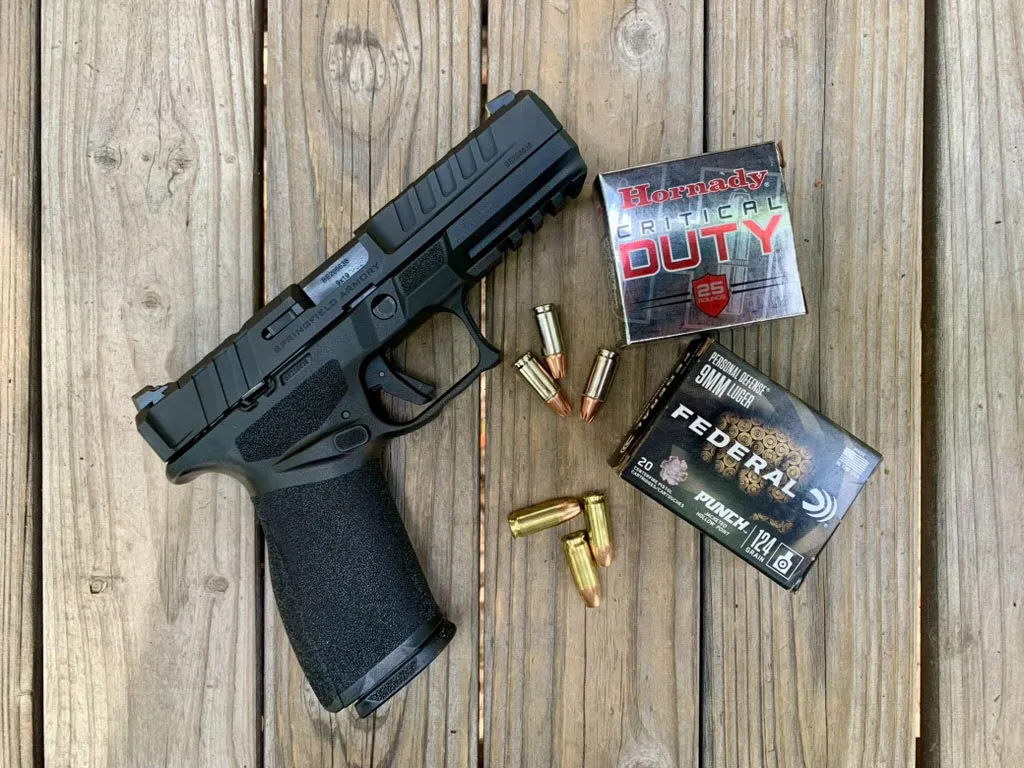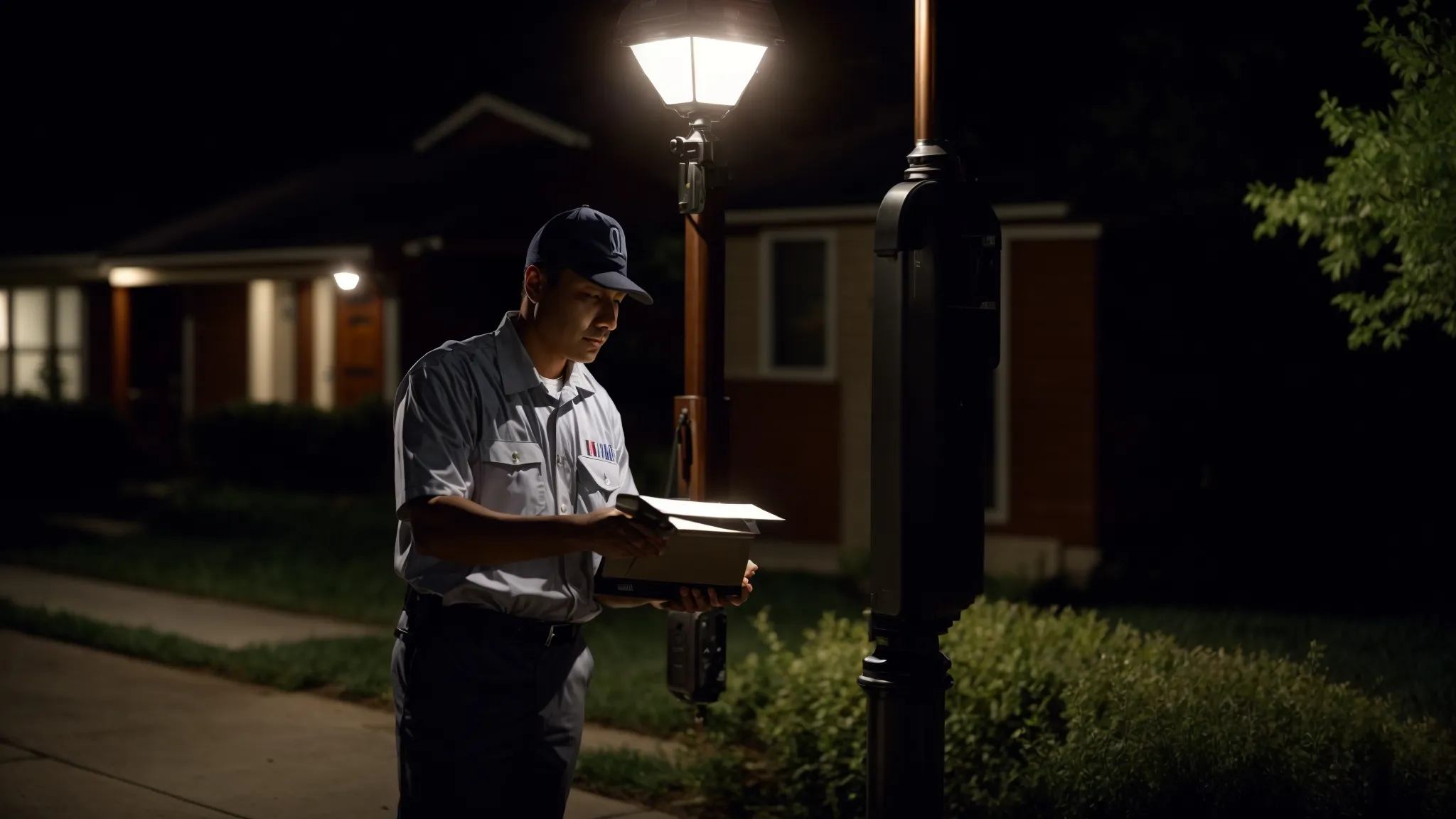News
Critical Components for a Reliable Home Defense Handgun

A dependable home defense handgun is more than just a powerful tool; it’s a vital part of ensuring safety in times of need. The suitable handgun should offer reliability, ease of use, and effectiveness under pressure.
This article will delve into the essential components that define a reliable home defense handgun and examine why the M9A4 stands out as a top choice.
Caliber Selection
One of the first considerations is the caliber of the handgun. Popular choices for home defense include 9mm, .40 S&W, and .45 ACP. The 9mm is often favored for its manageable recoil, availability, and sufficient stopping power. A good balance between stopping power and controllability is essential, as a home defense scenario may require quick, accurate shots.
Ergonomics
The ergonomics of a handgun significantly impact its ease of use. Factors such as grip size, shape, and texture play a vital role. A handgun should fit comfortably in the hand, allowing for a firm and stable grip. This improves control, especially in high-stress situations. Adjustable back straps and grip panels can help customize the fit to individual preferences.
Trigger Mechanism
The trigger mechanism is another critical component. A smooth, consistent trigger pull can enhance accuracy and reduce the likelihood of accidental discharge. Striker-fired handguns are famous for their consistent trigger pull from shot to shot. Additionally, the trigger reset, which is the point at which the trigger is ready to fire again, should be short and tactile to allow for faster follow-up shots.
Reliability
Reliability is paramount in a home defense handgun. The firearm must function flawlessly under various conditions, including different types of ammunition and environmental factors. Brands with a reputation for reliability and durability should be prioritized. It is advisable to test the handgun extensively with the ammunition intended for use to ensure it operates without issues.
Capacity
Magazine capacity is a significant consideration. A higher capacity allows for more rounds without the need for frequent reloading. However, this should be balanced with the handgun’s size and weight. Many modern handguns offer extended magazine options to increase capacity without significantly affecting the handgun’s ergonomics.
Safety Features
Safety features are crucial in a home defense handgun to prevent accidental discharges. Common safety mechanisms include manual safeties, trigger safeties, and drop safeties. While some prefer the simplicity of a firearm without manual safety, others feel more secure with this additional feature. The chosen safety mechanism should be intuitive and not hinder the quick deployment of the gun when needed.
Night Sights and Optics
In low-light conditions, night sights or optics can make a significant difference. Night sights typically use tritium inserts to glow in the dark, aiding target acquisition in darkness. Red dot sights or reflex optics provide an illuminated aiming point, which can enhance accuracy and speed, particularly for those who may not be as proficient with iron sights.
Accessory Rails
An accessory rail allows for the attachment of various accessories, such as tactical lights and lasers. A tactical light is handy for home defense, as it helps identify threats and non-threats in low-light situations. A laser sight can also improve accuracy and serve as a deterrent to potential intruders.
Recoil Management
Recoil management is essential for maintaining control and accuracy during rapid fire. Features such as recoil-reducing mechanisms and compensators can help mitigate the effects of recoil. A well-designed handgun with effective recoil management allows for faster follow-up shots and improved overall accuracy.
A Top Choice for Home Defense
The M9A4 is a prime example of a handgun that incorporates many of the critical components essential for reliable home defense.
Design and Ergonomics
This handgun’s design focuses on user comfort and control. Its grip is ergonomically shaped to fit a wide range of hand sizes, with a textured surface to ensure a secure hold even in stressful situations. The adjustable back straps allow for customization to individual preferences, enhancing the shooter’s control and confidence.
Trigger Mechanism
It features a consistent, smooth trigger pull, which is critical for accuracy in high-pressure scenarios. The short, tactile trigger reset allows for rapid follow-up shots, a vital feature in a home defense situation where multiple threats may be present.
Reliability and Capacity
Renowned for its reliability, this gun is designed to function flawlessly with various types of ammunition. Its robust construction ensures durability and dependable performance. The handgun also offers a high magazine capacity, reducing the need for frequent reloading and providing ample rounds for defense.
Safety Features
It incorporates multiple safety features to prevent accidental discharges while ensuring the firearm can be deployed quickly when needed. Its intuitive safety mechanisms do not impede the shooter’s ability to respond rapidly to a threat, balancing safety with readiness.
Selecting the suitable home defense handgun involves considering several critical components. The essential components mentioned above, play essential roles in ensuring a handgun is effective for home defense. Understanding and prioritizing these components will help in choosing the best handgun for protecting your home and loved ones.
News
The Timeless Legacy of the Clochant: Unveiling Its Historical and Cultural Significance

Throughout human history, architecture has served not only functional purposes but also acted as a reflection of culture, religion, and community values. One such structure that has stood the test of time is the Clochant—an architectural element deeply embedded in the historical and cultural landscape of Europe. The Clochant, often found as a part of religious buildings like churches and monasteries, represents much more than a mere bell tower. It symbolizes centuries of faith, art, and social evolution.
Understanding the Clochant
At its core, the term “Clochant” refers to a bell tower, most commonly associated with Christian churches in medieval Europe. The French word “clocher” literally means “bell tower,” and the design of these towers varied depending on the architectural styles of their time. Whether soaring into the sky as a Gothic spire or standing humbly alongside a small village chapel, the Clochant’s significance extended beyond its physical structure. It became a cultural beacon, signaling not only religious services but also serving as a focal point for community gatherings, celebrations, and even warnings during times of distress.
Origins and Evolution of the Clochant
The origins of the Clochant can be traced back to the Roman Empire, where the first bells were used to announce events and signal time. However, it was during the early Christian era that bell towers became a prominent feature of religious architecture. Clochants evolved with the advent of Christianity, often integrated into church designs to represent the Church’s authority and presence.
Medieval Europe witnessed the golden age of Clochant construction, with intricate and towering structures symbolizing the heavens. These bell towers were often designed to be visible from miles around, serving both a practical function and a metaphysical one—acting as a bridge between the earthly and the divine. Over the centuries, the Clochant took on regional variations, with Romanesque, Gothic, and Baroque styles each contributing to the architectural diversity of these towers.
Symbolism and Religious Importance
The religious importance of the Clochant cannot be overstated. It was often the highest point in a town or village, a visible representation of the church’s dominance in daily life. Bells housed within these towers marked the hours of prayer, called worshipers to mass, and rang out to commemorate significant events. The rhythmic ringing of bells from the Clochant became a part of the soundscape of European life.
In many ways, the Clochant acted as the church’s voice, ringing out across the countryside to remind people of their faith and duties. The larger the tower, the more significant the church, reflecting the power and influence of the religious institution in that area. The Clochant’s bell also had a deeper symbolic resonance, often believed to drive away evil spirits, storms, or plagues.
Cultural and Social Role of the Clochant
Beyond its religious significance, the Clochant also played a pivotal role in the daily life of medieval communities. The sound of the bells served as a timekeeper for townspeople, marking key moments in the day—beginning work, taking breaks, and ending labor. The bells also announced important social events such as weddings, funerals, and celebrations.
During times of danger, the Clochant could serve as an early warning system, alerting townspeople to imminent threats like fires, invasions, or natural disasters. Its tall structure allowed for a wide auditory and visual range, making it an essential communication tool in an age before modern technology.
In some regions, the construction of a Clochant was a matter of pride for the community. Villagers would often contribute funds or labor to the building of these towers, knowing that a grand Clochant would put their town on the map and attract travelers, pilgrims, and tradespeople. The presence of a majestic Clochant could elevate a small village’s status, making it a central hub for surrounding areas.
Architectural Splendor: Clochants Across Europe
While the Clochant is most commonly associated with France, similar structures are found across Europe, each embodying the architectural trends of its time. The Romanesque Clochants, with their rounded arches and massive stone construction, evoke a sense of stability and strength. In contrast, the Gothic Clochants, characterized by their pointed arches and intricate stonework, stretch towards the heavens, a symbol of aspiration and divine connection.
In Italy, the campanile, a free-standing bell tower, became a distinctive feature of many churches and cathedrals. The most famous of these is the Leaning Tower of Pisa, which, though known for its tilt, originally served as a bell tower. In Spain, the Giralda in Seville, originally an Islamic minaret, was converted into a bell tower following the Reconquista, blending Moorish and Christian architectural elements.
The Baroque period brought about more ornate and elaborate Clochants, with dramatic facades and dynamic forms that reflected the grandeur of the Catholic Church during this time. Whether simple or extravagant, the Clochant has always been a canvas for artistic and architectural expression, showcasing the skills of local craftsmen and the aesthetic ideals of their era.
The Clochant in Art and Literature
The Clochant’s prominence in European culture extends beyond architecture and religion. It has been immortalized in countless works of art, literature, and music. Painters like Vincent van Gogh captured the Clochant as part of the rural landscape, using it as a symbol of stability and tradition amidst the changing world. In literature, bell towers often serve as a metaphor for time, faith, or the passing of eras.
Victor Hugo’s The Hunchback of Notre-Dame famously features the bell towers of Notre-Dame Cathedral, with the character Quasimodo as the bell-ringer. The novel captures the complex relationship between man, architecture, and society, with the Clochant playing a central role in the narrative.
Musically, the sound of the Clochant’s bells has inspired composers for centuries. Pieces like Giuseppe Verdi’s La campanella and Pyotr Tchaikovsky’s 1812 Overture incorporate the sound of bells, evoking the grandeur and solemnity of the Clochant’s toll.
The Clochant in Modern Times
While modern technology has replaced the need for bell towers as timekeepers and communication tools, the Clochant continues to hold a special place in the cultural consciousness. Many Clochants have been preserved as historical monuments, drawing tourists and serving as reminders of a bygone era. Restoration efforts have ensured that these architectural treasures are maintained for future generations to admire and study.
In some regions, the Clochant still fulfills its original function, with bells ringing out for religious services or local celebrations. The sound of the bells, though less ubiquitous than in centuries past, retains its power to stir emotions, reminding people of their shared history and cultural heritage.
Clochant: A Beacon of Resilience and Tradition
Ultimately, the Clochant stands as a symbol of resilience, faith, and tradition. It has witnessed the rise and fall of empires, the ebb and flow of religious movements, and the evolution of societies. Its bells have tolled in times of joy and sorrow, marking the passage of time and the continuity of human experience.
As we look to the future, the Clochant remains a reminder of the enduring power of architecture to shape our cultural identity. Whether viewed from afar as a towering spire or experienced up close through the deep resonance of its bells, the Clochant continues to inspire awe and reverence, connecting us to the past while guiding us forward into the future.
FAQs
What is the meaning of Clochant?
The term “Clochant” refers to a bell tower, typically part of a church or cathedral, used to house bells that ring out for religious and communal purposes.
What is the significance of the Clochant in medieval society?
In medieval society, the Clochant served as a timekeeper, a religious symbol, and a focal point for community events. Its bells marked significant moments in daily life, from religious services to social gatherings.
How did the design of the Clochant evolve over time?
The design of the Clochant evolved through various architectural styles, including Romanesque, Gothic, and Baroque. Each style reflected the cultural and religious ideals of its time, with designs ranging from simple to highly ornate.
Why were Clochants built so tall?
Clochants were built tall to symbolize the Church’s connection to the divine and to ensure that the sound of the bells could reach a wide audience. Their height also made them landmarks and points of pride for local communities.
What role did the Clochant play in art and literature?
The Clochant has been a prominent feature in European art, literature, and music. It often symbolizes faith, time, and tradition, as seen in works like Victor Hugo’s The Hunchback of Notre-Dame and the paintings of Vincent van Gogh.
News
From Filing to Settlement: Key Tips for Successfully Resolving Your Personal Injury Claim

Table of Contents
- Understanding Personal Injury Claims
- Steps to Take After an Injury
- Gathering Evidence
- Seeking Medical Attention
- Consulting a Legal Expert
- Filing a Claim
- Negotiating a Settlement
- Court Proceedings Basics
- Common Pitfalls and How to Avoid Them
- Resources for Victims
Understanding Claims for Personal Injuries
Personal injury claims cover many incidents, from car accidents to slip-and-fall cases. Managing a personal injury claim may seem daunting, but you can navigate it successfully with the correct information and assistance. Often, seeking advice from a personal injury lawyer Hernando County FL, can serve as a helpful initial move in grasping your rights and choices. The expertise they bring can help clarify the nuances of the law and ensure you’re making informed decisions.
Steps to Take After an Injury
Immediately after an injury, taking specific steps to protect your rights and ensure a solid foundation for your claim is crucial. Begin by documenting the incident and notifying the appropriate parties. It may include calling the police, informing your employer if it’s a workplace injury, and notifying your insurance company. Maintaining a thorough record of events is very advantageous in the future. Write down critical details like the time, location, and other relevant circumstances surrounding the incident. This type of comprehensive documentation can be helpful when discussing your case with legal experts.
Gathering Evidence
Collecting sufficient evidence is critical to substantiate your claim. It means gathering witness statements, photographs, and other pertinent information supporting your case. Ensure you keep detailed records of all communications and interactions related to the incident. If you get into a car accident, snap pictures of the scene, vehicles, and any injuries. If any people saw the incident, get their contact details and inquire about their version of events. Such evidence can make a significant difference in the strength of your case.
Seeking Medical Attention
Get medical help quickly and establish official documentation of your injuries. Keeping detailed medical records can significantly impact the outcome of your claim. It’s not enough to see a doctor once; follow through on all prescribed treatments and attend follow-up appointments. Maintaining consistency in your medical care can help document the seriousness of your injuries. Accurate medical records are essential in demonstrating the severity of your injuries and how they have affected your daily life.
Consulting a Legal Expert
A personal injury attorney can offer precious guidance. They can help navigate the complexities of your case and work on your behalf to secure the best possible outcome. A skilled lawyer who focuses on personal injury cases can provide a valuable assessment of your claim. They will be your advocate, handling negotiations with insurance companies and opposing counsel. Choosing the right attorney with a diverse track record can significantly affect the trajectory and outcome of your case.
Filing a Claim
Filing a claim for personal injury requires multiple steps, such as creating and sending out different paperwork. Ensuring accuracy and timeliness is critical at this stage. Familiarize yourself with your jurisdiction’s specific requirements and deadlines to avoid any legal complications. The process typically starts with submitting a claim notice and may include motions and pleadings. Your legal team will help ensure that all the appropriate documentation is submitted on time, guiding you through deadlines and regulations specific to your case.
Negotiating a Settlement
Many personal injury cases are resolved through settlements before reaching court. Successful negotiations can result in a just and prompt conclusion. Settlements can be a practical option to save time, reduce stress, and avoid the unpredictability of a court trial. An experienced lawyer can help you evaluate settlement offers, ensuring you receive a just and equitable resolution. If the settlement is inadequate, your lawyer will be prepared to take the case to trial to fight for your rights.
Court Proceedings Basics
Your case may proceed to court if a settlement cannot be reached. Getting acquainted with the court processes and anticipating what may occur can reduce some of the anxiety experienced. Your legal counsel will represent you and effectively present your case. Court proceedings can involve several stages, including pre-trial motions, discovery, and the trial. Understanding these steps can help you feel more prepared and less anxious about the process. Effective legal representation is essential to present your case convincingly to a judge or jury.
Common Pitfalls and How to Avoid Them
Being aware of and avoiding common pitfalls can significantly strengthen your case. Staying organized and proactive throughout the process ensures you notice alltical aspects. Work closely with your lawyer to keep track of important dates, compile necessary evidence, and avoid making statements that could be used against you. By remaining vigilant and informed, you can avoid common missteps that could undermine your claim.
Resources for Victims
Numerous resources are available to assist personal injury victims in their recovery and legal journey. Support groups and informational websites can provide valuable assistance and guidance. Utilizing these resources can assist you in successfully managing the complexities of your claim and simplifying your journey to recovery. Non-profit organizations and online communities can offer emotional and practical support, helping you connect with others who have been through similar experiences and providing tips for managing the various aspects of your injury and claim process. Utilizing these resources can be crucial to your recovery and legal strategy.
News
Resources for Mail Carriers

As mail carriers navigate the demands of their day-to-day duties, having the right resources can make all the difference in productivity and personal well-being. From the perfect pair of shoes to weather-resistant attire, and from ergonomic accessories to health-maintenance tips, this article aims to cover essential items that support mail carriers in their professional lives. Keep reading to discover how to equip yourself for efficiency, comfort, and safety on your postal routes.
Essential Gadgets and Tools Every Mail Carrier Should Have
Efficient mail delivery hinges on reliable gadgets and tools. A durable, high-capacity mailbag is essential for organizing and protecting items, while handheld devices for tracking and confirming deliveries boost accuracy. Smartphones with route optimization apps streamline navigation, and multi-tools assist with minor repairs.
For delivering in low-light conditions, a sturdy LED lights flashlight or headlamp is crucial, with high-lumen, rechargeable options offering convenience. Staying hydrated is also vital, so a portable hydration system, like an insulated water bottle or hydration pack, is important, especially in hot climates.
Exploring the Best Footwear Options for Mail Carriers on the Go
Mail carriers spend countless hours on their feet, so selecting the right footwear is crucial. Comfort, support, and durability are the three pillars of a shoe selection. The shoes should have adequate cushioning, arch support, breathable material, slip resistance, and conform to uniform standards. Seasonal considerations, such as waterproof boots or insulated options, are also important.
Regularly rotating shoes can prevent excessive wear and tear, leading to discomfort and foot problems. Investing in high-quality footwear may be more expensive upfront but ultimately benefits the mail carrier by reducing foot injuries and the need for frequent replacements.
Weatherproof Gear for Mail Carriers: Staying Dry and Comfortable in Any Season
Mail carriers face harsh weather conditions daily, making weatherproof gear essential. A high-quality, water-resistant jacket is essential for dryness during rainy or snowy days. Layering is crucial for adjusting to temperature fluctuations. Breathable fabrics are essential for preventing overheating and preserving warmth. Thermal underwear is a good option for extreme cold.
Waterproof gloves and hats provide comfort and protection. Gloves with grip features help handle mail securely while keeping hands warm and dry. Reflective elements on weatherproof gear increase visibility, especially during winter hours, ensuring mail carrier safety and efficient delivery. Reflective elements on weatherproof gear are crucial for a safe and efficient mail carrier experience.
Ergonomic Solutions for Mail Delivery: Bags, Carts, and Accessories

To reduce the physical toll of carrying mail, ergonomic solutions are key. Adjustable mailbags with even weight distribution and optional waist support can relieve shoulder and back strain. For heavy loads, a well-balanced delivery cart with sturdy wheels and an appropriate handle height is beneficial, and electric-assist models can further ease the burden. Simple additions like gel insoles and multi-pocketed vests can enhance daily comfort and efficiency.
Vehicle choices also impact comfort; selecting a model with easy cargo access and ergonomic seating is crucial for long drives. Partnering with a reliable VW dealership near Chicago can help mail carriers find a vehicle tailored to their specific needs, ensuring a more comfortable delivery experience.
Health Resources and Injury Prevention for Mail Carriers: Staying Fit on the Job
Mail carriers need to prioritize health and injury prevention due to their physical occupation. Regular exercise, stretching, and strength training can prepare the body for mail delivery demands. Proper lifting techniques can prevent back injuries. Mental health resources like counseling and stress management strategies can help carriers cope with tight delivery schedules and customer demands.
A balanced diet, including protein-rich snacks and complex carbohydrates, is essential for energy. Proper meal planning and vaccinations are also crucial. Regular health check-ups and a small first-aid kit are practical ways to maintain health on the job.
Altogether, the well-being of mail carriers hinges on the right combination of practical resources and proactive health measures. Equipped with quality footwear, weatherproof clothing, time-saving gadgets, ergonomic delivery solutions, and a robust health routine, mail carriers can ensure their safety, comfort, and efficiency as they keep our communities connected.
-

 News5 months ago
News5 months agoVaping: Beyond the Hype – Unveiling the Risks and Realities
-

 Entertainment9 months ago
Entertainment9 months agoUnleashing Geekdom: Exploring the Wonders of Geekzilla Radio
-

 Games9 months ago
Games9 months agoHow To Play Baduk game: Unveiling the Art of Strategic Brilliance
-

 Entertainment8 months ago
Entertainment8 months agoGeekzilla Redes Sociales: Unleashing the Geek in Social Media
-

 Tech9 months ago
Tech9 months agoUnlocking the Secrets of pi123
-

 News9 months ago
News9 months agoAbraham Quiros Villalba: Unveiling the Journey of a Visionary
-

 Fashion8 months ago
Fashion8 months agoWhat is λιβαισ? A Complete Guide
-

 Tech9 months ago
Tech9 months agoRemote iCloud Quota UI: Revolutionizing iCloud Management
